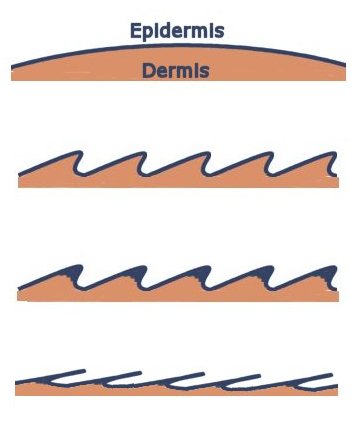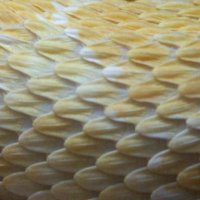ZooPax
A Matter of Scale
PART I: ABOUT SCALES
|
One of the characteristic features of the reptiles is that their bodies are covered with scales. The scales of a reptile may cover the entire body. Reptilian skin, with its waterproof scales, is one of the features of reptiles that makes life on land possible. The scales form a continuous barrier to evaporation. The bodies of reptiles are not wet and slimy like the bodies of fish or amphibians. Reptile skin is dry because reptiles have no skin glands. |
|
|
|
Reptile scales are epidermal scales, that is, they arise from the skin. Like feathers, scales are composed of the protein keratin, which is light, flexible, and strong, like the keratin that makes up fingernails. Reptiles actually have two kinds of scales -- one type more typical of snakes and lizards and the other of crocodiles and turtles. These are different both in their arrangement over the animal's body and in the way they develop. How do scales develop? They begin as a projection from the skin. Skin has two layers, called the epidermis and the dermis. The epidermis is the top layer. In snakes and lizards, a scale typically begins as a fold of epidermis, into which part of the dermis projects. See the diagram on the left. As the scale continues to develop, the upper layer of the epidermis becomes hardened with the protein keratin, and the dermis withdraws, leaving a series of tough overlapping scales. |
|
In turtles and crocodiles,
most scales do not overlap. In these animals, scales begin as local
thickening in the epidermis. Bony plates may also develop in the dermis
under the scales. These plates do not necessarily form in the same pattern
as the scales above them. |
 |




